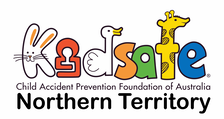Welcome to Play SafetyStatistics show that nationally, nearly 10% of all child injury hospitalisations are playground related. This equates to over 6,000 children being admitted to hospital each year from playground injury, with countless more children injured who do not require hospital admission. What’s more, these numbers appear to be rising.
The key safety risks for children at play that Kidsafe NT targets are:
Playground safety
Careful planning, design and maintenance of playgrounds and play equipment can prevent or reduce the severity of playground injuries. These factors in collaboration with supervision of children at play will ensure a safer playground for all.
How Kidsafe is your playground? The key hazards of playground or play area safety to look out for are:
Want to raise playground and play area safety awareness? For all the information you need on safe play environments, please refer to our PLAYGROUND INSPECTIONS tab or see our extensive list of playground information sheets available to download. Water safety
Here in the Territory we have unique issues to consider when playing in and around water and waterways namely box jellyfish, crocodiles and water pipes and drains. Whether at home, camping, visiting family and friends or on holiday, it is always important to keep safety in mind when children are in or near water. Drowning is the number one cause of death for children under five. Drowning can occur quickly and quietly, without any warning noises. Sadly, on average, one child dies each week in Australia as a result of preventable drowning.
How to be Kidsafe around water:
Water Safety Awareness Program In a bid to reduce injury and death around our water ways, Northern Territory children under five can take advantage of this FREE NT Government initiative. Administered by the Royal Life Saving Society, in conjunction with the Northern Territory Water Safety Advisory Council, the Under 5 Water Safety Awareness program provides free water safety lessons for parents and guardians, and their children aged under five in urban, rural and remote areas of the Territory. The program consists of five sessions to develop a child’s confidence and ability in water and teach general water safety awareness and rescue techniques. Unique Issues to the NT Here in the Territory we have unique issues to consider when playing in and around water and waterways namely box jellyfish, crocodiles and water pipes and drains. Box Jellyfish Box Jelly Fish bites can be lethal and must be treated immediately. The official Box Jelly Fish season is from 1 October to 1 June. For up to date information visit the Department of Health website. Water Pipes and Drains Kidsafe NT is a member of the NT Water Advisory Council and has worked in conjunction with the Territory Government and the Darwin and Palmerston Councils to develop a community awareness campaign to increase awareness of the risk. Crocodile Safety The Northern Territory can claim the position as having the most crocodiles in our waterways than any other state or territory in Australia. With this comes the need to be Crocwise. For more information on how to be Crocwise go to the NRETAS website. Pool Safety
Check your pool gate and fencing
Drowning is one of the leading causes of death for Australian children under 5 years of age. Between 2011-2012, 21 children aged between 0-4 years drowned in Australia – swimming pools were the most common location for drowning amongst this age group, accounting for 38% of drowning incidents. Are your pool gates Kidsafe?
For more information on the Australian Standards for pool fencing visit the Northern Territory Government's pool fencing and barrier safety standards site. backyard safety
The most common place for childhood injury is in and around the home. Many of these injuries can occur in the backyard and garden The home yard or garden area is the most common location within the home setting that children are sustaining injuries The majority of these presentations are children in the 0-4 age group. Nearly half of all backyard injuries are from falls.
Considerations:
Trampoline safety
Trampoline Safety is flippin important! Statistics show at least eight children per day being injured on trampolines in Australia. The Australian Competition and Consumer Commission has teamed up with Olympian trampolinist Blake Gaudry, Kidsafe and state consumer affairs agencies to help keep kids safe on trampolines. To view the safety checklist and video developed by Kidsafe in collaboration with the ACCC click on this link.
How to make trampoline play Kidsafe:
|
Information SheetsFact Sheet - Birth to 6 Months
Fact Sheet - 6 Months to 12 Months Fact Sheet - Toddlers 1 to 2 Years Fact Sheet - Water Safety Fact Sheet - Playground Safety Checklist - Playground Safety Newsletter Sign UpWe update our information sheets regularly. To ensure you always have the most up to date, please sign up to our newsletter below.
|
|
|
|
|
Donate to make a safer world for Territory Kids |
COntact UsOpen hours:
9am - 4pm Monday to Friday Email: [email protected] Phone: (08) 8941 8234 Visit us: 1/13 Bishop Street, Woolner NT 0820 Post: PO Box 37662, Winnellie NT 0821 Location |
|
